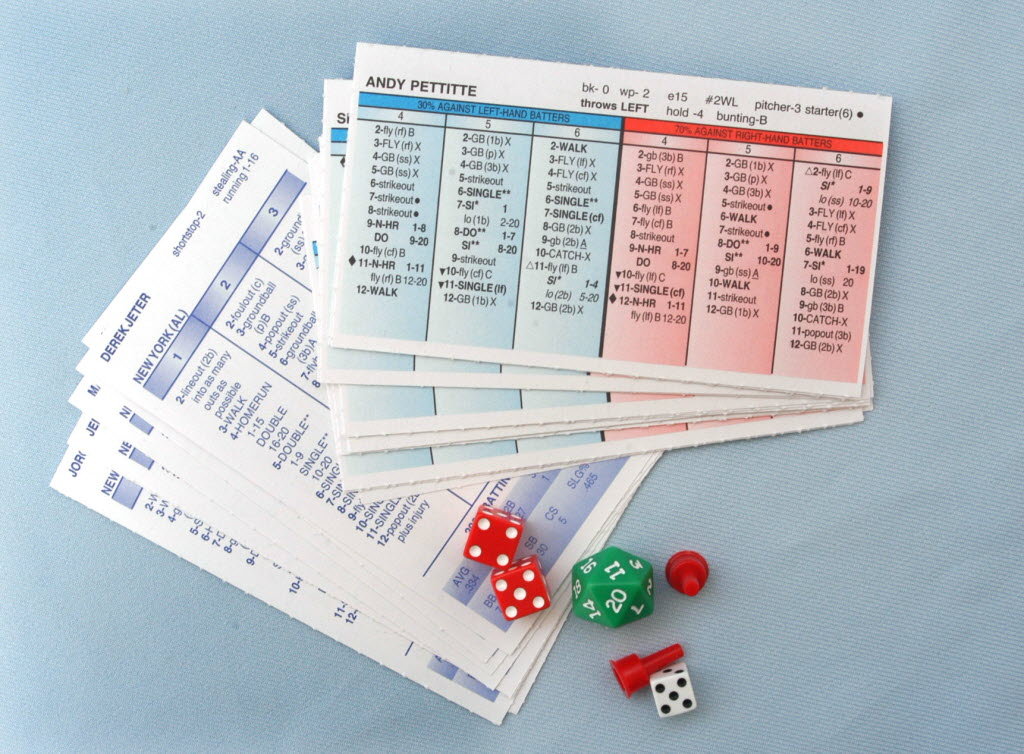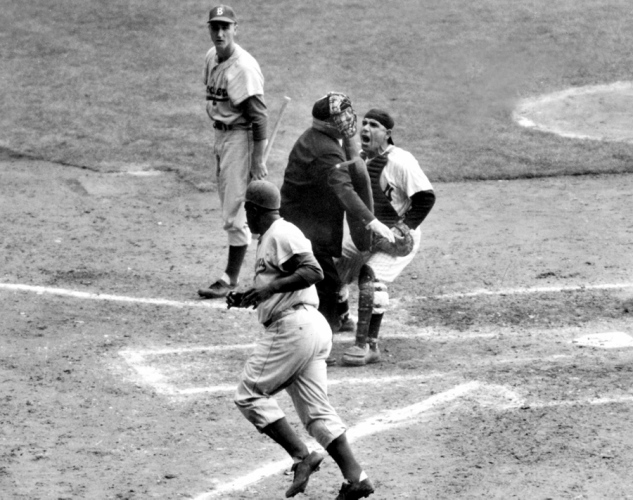 I grew up playing Strat-O-Matic in the 1980s and made two observations about the game of baseball before I was ten years old. One observation I made was embraced in baseball. The other was scorned. The first was the importance of on-base percentage. The other was the stolen base.
I grew up playing Strat-O-Matic in the 1980s and made two observations about the game of baseball before I was ten years old. One observation I made was embraced in baseball. The other was scorned. The first was the importance of on-base percentage. The other was the stolen base.
I came to the same Moneyball observation that a walk was as good as a single. It may not look as pretty, but it got you on base.
The other observation is that stolen bases score runs.
In the Moneyball era, outs are sacred. They are a finite resource. The aim is to keep the lineup moving and not surrender your outs. With that mindset, why would you risk getting thrown out at second base on an attempted steal? Better to just keep the lineup moving, right?
Wrong.
As an offense, the objective is to score runs, not to horde your outs. Standing put while on first base, moving station to station or to wait for the home run doesn’t always work. While standing on first base, without a home run, you’ll likely need two at-bats to score that runner from first base.
Chris Davis, who hit 53 Home Runs in 2013, only hit one out in 7.8% of his plate appearances.
The OBP in MLB in 2013 was .317. The batting average in MLB in 2013 was .253. The average MLB team hit 155 HR in 2013.
There was only (on average) a 2.6% chance to get that stationary runner in from first base via a Home Run. To get that stationary runner in from first via a double or triple (the average MLB team had 274 doubles and 26 triples in 2013) was less than 5.0% (as not every double will score a runner from first). If the objective of the offense is to score and if you have less than a 7.6% chance of scoring that runner from first base by staying stationary, why wouldn’t a manager run at will? There’s a reason why a runner at second base is called being in scoring position.
Let’s play the stationary game. With only having a 7.6% chance of scoring a stationary runner from first base, there’s a 92.4% chance that you’ll need more than one batter to get that runner home. A walk or hit to advance that runner to second (31.7% chance) plus a base hit to get that runner in once that stationary batter is moved to second base (25.3% chance) gives you approximately an 8.0% chance of getting that runner in from first base with more than one batter. Add it up and you have approximately a 15.6% chance of getting that runner home from first base by playing station to station ball.
 When you get that runner into scoring position via a stolen base, you dramatically raise the odds. It is worth trading a potential out on an attempted steal. And the numbers are consistent.
When you get that runner into scoring position via a stolen base, you dramatically raise the odds. It is worth trading a potential out on an attempted steal. And the numbers are consistent.
Let’s look at some past Mets teams to see how stolen bases translated into runs – the numbers are consistent, on good teams and bad.
The 1982 Mets had three players that stole 15 or more bases (Mookie Wilson, Bob Bailor, John Stearns). These three players had a combined 95 stolen bases and were caught 26 times (79% success rate). 42 runs were scored after one of these players stole a base. In other words, one of these three men score 35% of the time when they attempted to steal. When they were successful, they scored 44% of the time.
The 1983 Mets had four players that stole 15 or more bases (Mookie Wilson, Darryl Strawberry, Bob Bailor, Brian Giles). These four players had a combined 108 stolen bases and were caught 35 times (76% success rate). A run was scored 33% of the time a stolen base was attempted. A run was scored 44% of the time they were successful.
The 1986 Mets had three players that stole 15 or more bases (Lenny Dykstra, Darryl Strawberry, Mookie Wilson). These three combined for 84 steals and were caught 26 times (76% rate). They scored 32% of the time when an attempt was made, 42% when successful.
The 1988 Mets had five players with 15 or more swipes (Lenny Dykstra, Darryl Strawberry, Howard Johnson, Kevin McReynolds, Mookie Wilson). These five combined for 118 stolen bases and were caught 33 times (78% rate). They scored 27% of the time an attempt was made and 35% when successful.
Now let’s look at the 2013 version of the Mets. There were three players with 15 or more steals (Eric Young, Daniel Murphy, David Wright). These three combined for 78 stolen bases and were caught 13 times (86% rate). These three scored 31% of the time when an attempt was made and 36% of the time when successful.
These numbers are fairly consistent. When you have speed in your lineup and actually use it increases, your odds of scoring increases. Add speed to your lineup and you’ll score. Add speed to the lineup and have someone in your lineup that can hit, you’ll get runners in from second base consistently.
Let’s look at the Mets top 15 stolen base seasons:
- Jose Reyes – 2007. 78 stolen bases with a 79% success rate. Scored a run 33% of the time an attempt was made and 42% when he was successful. (Note – when the Mets collapsed down the stretch, Reyes had 11 base hits and not a single stolen base)
- Roger Cedeno – 1999. 66 stolen bases with an 80% success rate. Scored a run 46% of the time an attempt was made and 58% after a successful steal (which illustrates how dangerous a base stealer is when there’s a solid lineup).
- Jose Reyes – 20006. 64 stolen bases with a 79% success rates. Scored a run 31% of the time when attempting a steal and 39% when successful.
- Jose Reyes – 2005. 60 stolen bases – success rate 80%. Scored on 39% of attempts and 48% of the time when successful.
- Mookie Wilson – 1982. 58 stolen bases – 78% success rate. Scored on 38% of attempts and 48% when successful.
- Jose Reyes – 2008. 56 stolen bases – success rate 79%. Scored on 38% of attempts and 48% of successful steals.
- Mookie Wilson – 1983. 54 stolen bases – success rate 77%. Scored on 37% of attempts and 48% of successful steals.
- Lance Johnson – 1996. 50 stolen bases – 81% success rate. Scored on 29% of attempts and 36% of successful steals.
- Mookie Wilson – 1984. 46 stolen bases – 84% success rate. Scored on 35% of attempts and 41% of successful steals.
- Frank Taveras – 1979. 42 stolen bases – 69% success rate. Scored on 26% of attempts and 38% when successful.
- Howard Johnson – 1989. 41 stolen bases – 84% success rate. Scored on 27% of attempts and 32% when successful.
- Lee Mazzilli – 1980. 41 stolen bases – 73% success rate. Scored on 30% of attempts and 41% when successful.
- Jose Reyes – 2011. 39 stolen bases – 85% success rate. Scored on 41% of attempts and 49% when successful.
- Eric Young, Jr – 2013. 38 stolen bases (with Mets) – 84% success rate. Scored on 33% of attempts and 39% when successful.
- Vince Coleman – 1993. 38 stolen bases – 75% success rate. Scored on 35% of attempts and 47% when successful.
When we look at the top 15 stolen base seasons, Frank Taveras had the lowest success in scoring a run, only 26% of the time when he attempted a steal, which was the result of being thrown out 31% of the time while attempting to steal. Even with this, when he tried to run in 1979, he’d end up crossing the plate 38% of the time – significantly higher than playing station to station.
Howard Johnson only crossed home plate on 32% of successful steals in 1989 and Lance Johnson only 36% of his successful steals in 1996, rates that are still significantly higher than playing station to station ball.
When you put speed in your lineup and use it, that rate at which those speedsters will score is predictable. Get a lot of speed in your lineup (like the 1985 Cardinals that had 5 players with over 30 stolen bases) you have a lineup that is deadly and scores at will. The 1985 Cardinals led the league in runs and scored 41 more than the next highest scoring team (0.25 runs per game) while hitting only 87 Home Runs (11th in the league).
Speed Kills. Moneyball just hasn’t figured it out yet.














